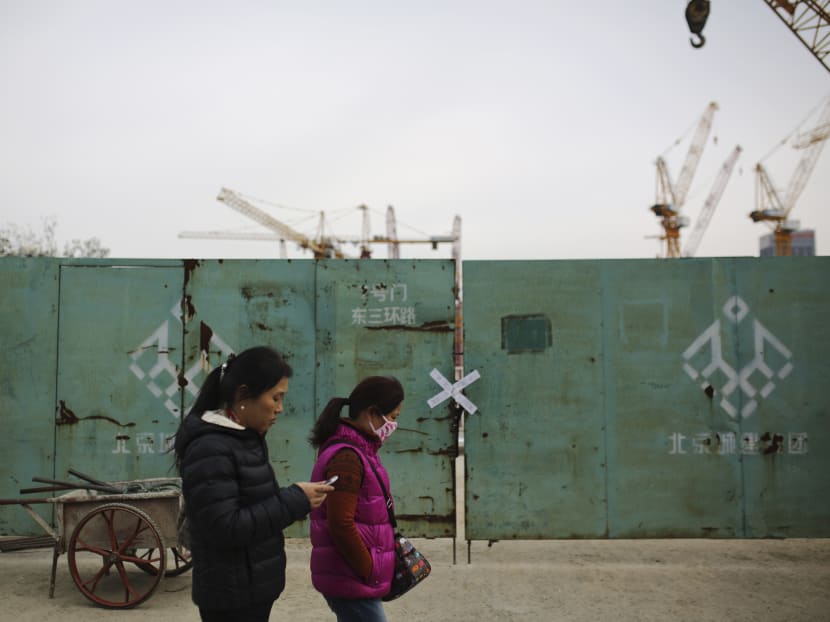US pollution data on Beijing blocked on mobile app
BEIJING — All the sky-clearing measures plus cooperation from the weather kept Beijing relatively free of air pollution for most of a seven-day Asia-Pacific conference. Then, toward the end as top leaders met, the smog crept back.

A woman wearing a mask walks past a closed construction site at the Central Business District in Beijing, China Nov 11, 2014. All the sky-clearing measures plus cooperation from the weather kept Beijing relatively free of air pollution for most of the APEC conference, with the smog creeping back in on Tuesday. Photo: AP
BEIJING — All the sky-clearing measures plus cooperation from the weather kept Beijing relatively free of air pollution for most of a seven-day Asia-Pacific conference. Then, toward the end as top leaders met, the smog crept back.
So, China went to Plan B: Censor the pollution monitors.
Many Beijingers get up-to-the moment updates on pollution — including levels of the dangerous PM2.5 particles — by monitoring websites and mobile phone apps. Usually these provide two sets of readings, one from Beijing city authorities and one from the US Embassy, with the latter considered by many to be the more trustworthy.
But the Embassy readings were absent from some of the pollution monitoring sites during the Asia-Pacific Economic Cooperation conference that opened on Nov 5 and culminated in a summit today of leaders including Presidents Barack Obama, Xi Jinping of China and Vladimir Putin of Russia.
One of the websites, Beijing-air.com, posted a noticing saying it had “received instructions from authorities saying that this month’s air quality readings will be based only on what is released by the Beijing environmental protection bureau”.
“Wishing the APEC meeting every success,” the website added.
Chinese authorities went to great lengths to turn the skies blue for APEC by closing factories and construction sites, banning cars on certain days and postponing the seasonal start of a coal-powered heating system.
For most of the conference the skies were so stunningly clear that “APEC blue” was coined by Chinese as a new phrase meaning “ephemeral” — “He’s not that into you; it’s an APEC blue.”
By yesterday evening, Beijing’s levels of PM2.5 had reached nearly 200 — or about eight times the level considered safe by the World Health Organization — according to the US Embassy figures, which were still available on Twitter for people who can log onto the Internet outside of China’s Great Fire Wall.
One of the mobile apps that Beijingers use, the CN Air Quality app, had no pollutants data for the US Embassy and an index reading of “-1” this morning. The official index was “50” or “Good”. Yesterday, the app had mysteriously failed to load.
Many Beijing residents check these apps several times per day to decide, for example, whether to go jogging.
Chinese officials say the US Embassy’s reading is unreliable because it only measures the air in one spot, from its rooftop, whereas Beijing municipal’s environmental monitoring centre reports hourly data from 35 stations around the city.
The US Embassy also rates pollution levels according to more stringent standards, which has in the past frustrated the Chinese government, which unsuccessfully asked the embassy in 2012 to stop publishing the data. The government said it wasn’t fair to judge Chinese air by American standards because China is a developing country. AP





